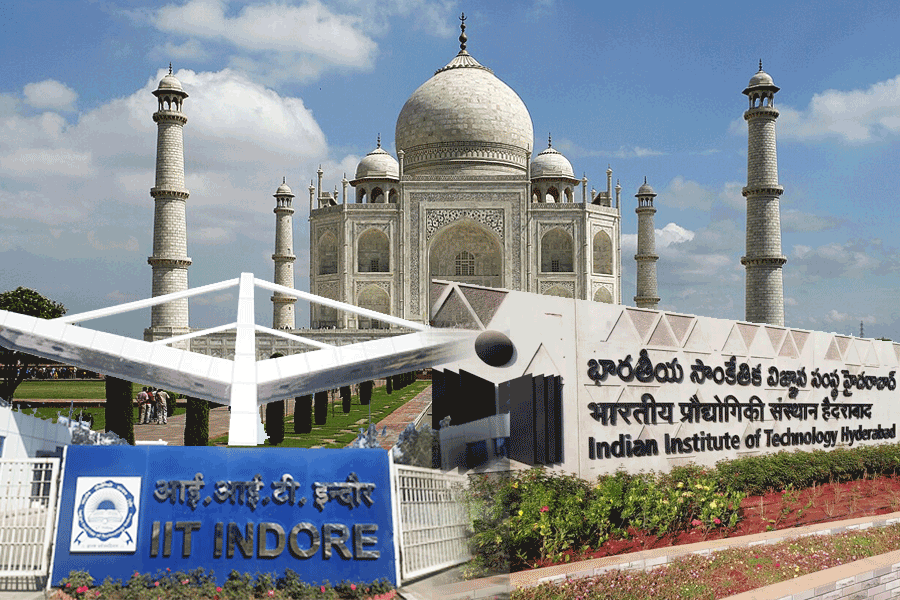The IITs in Indore and Hyderabad have jointly developed two special geogrids, inspired by the Taj Mahal's architecture and the Indian star tortoise's shell pattern, to strengthen eco-friendly construction work and address climate change issues, officials said.
These two geogrids are expected to have various civil engineering applications, including the construction of flexible pavements, especially highways, they said.
A geogrid is a geosynthetic material used to reinforce soil and other materials.
The geogrids developed by the Indian Institutes of Technology (IITs) at Indore and Hyderabad have been named Multiaxial Diamond Anchored Octagonal Geogrid (MDAOG) and Multiaxial Concentric Octagonal Geogrid (MCOG), an official said on Tuesday.
These two innovations drew inspiration from nature, particularly from the Indian star tortoise and the architecture of the Taj Mahal, the official said.
India, with its extensive road network, faces significant challenges in managing massive volumes of crushed stone aggregates required for such infrastructure, IIT Indore's director Prof Suhas Joshi said.
"This technological development is in alignment with the nation's commitment to the UN Sustainable Development Goals, particularly those focused on innovative, resilient, and sustainable infrastructure. This new technology addresses climate change, resource scarcity, and waste management issues," he said.
Another official from IIT Indore said the MDAOG and MCOG geogrids are expected to have diverse civil engineering applications, including the construction of flexible pavements, especially highways.
They also enhance airport runways and railway track beds, provide support in tunnel construction and underground mining, and reinforce foundations, embankments, and slopes.
Additionally, they are vital in retaining walls, bridge abutments, riverbank protection, and soil erosion control, making them crucial for sustainable civil engineering projects, the official said.
The geogrids can be produced from recycled or waste materials, such as post-consumer plastics, addressing solid waste management challenges while supporting a circular economy. This reduces the need for virgin materials and cuts down greenhouse gas emissions during production.
By stabilising soils, preventing erosion, and enhancing infrastructure resilience, geogrids help mitigate climate impacts like flooding and rising sea levels, making them essential in building climate-resilient infrastructure, the official said.
The research team that developed the geogrids included Dr Baadiga Ramu of IIT Indore and Prof Umashankar Balunaini of IIT Hyderabad.
Except for the headline, this story has not been edited by The Telegraph Online staff and has been published from a syndicated feed.










